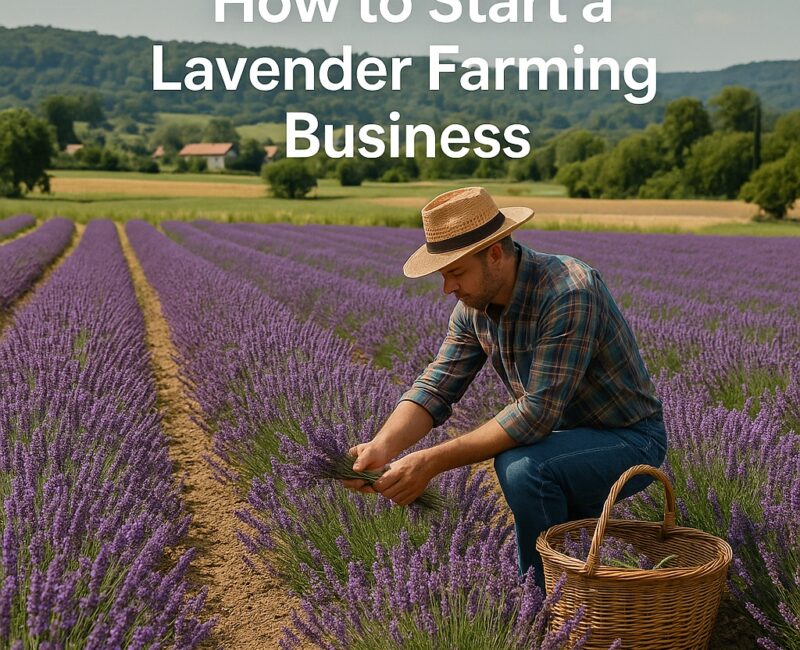Lavender isn’t just a pretty purple flower—it’s a thriving agricultural opportunity. In 2025, lavender farming is blooming, especially in the US, UK, Canada, Australia, and Germany. With rising demand in skincare, aromatherapy, and wellness industries, this versatile crop is a top pick for small landowners and agri-entrepreneurs.
Let’s break down how you can turn fields of lavender into streams of income.
Why Lavender Farming?
- High market demand for essential oils, dried flowers, soaps, and cosmetics
- Low-maintenance crop once established
- Drought-tolerant and sustainable
- Multiple income streams: agritourism, essential oils, dried arrangements
Best Climates for Lavender Cultivation
Lavender thrives in:
- Mediterranean climates (dry, hot summers; mild winters)
- Well-drained sandy or loamy soil
- Full sunlight exposure (6+ hours/day)
Top growing regions:
- USA: California, Arizona, Texas, Oregon
- UK: Southern England
- Australia: Tasmania, Victoria
- Canada: British Columbia (with drainage management)
- Germany: Rhine Valley
Step-by-Step Guide to Starting a Lavender Farming Business
1. Land Selection & Soil Prep
- Choose slightly alkaline, well-drained soil (pH 6.5–7.5)
- Avoid water-logging zones
- Till the land and add organic compost
2. Choose Your Lavender Variety
- Lavandula angustifolia (English lavender): best for oils, perfumes
- Lavandula x intermedia (Lavandin): higher yield, used for soaps and cleaning products
- Spanish or French lavenders: ornamental value
3. Planting Process
- Best time: Spring or early Fall
- Spacing: 2–3 feet apart
- Use nursery starts or clones (not seeds) for faster growth
4. Irrigation & Maintenance
- Use drip irrigation in dry zones
- Prune annually after flowering
- Avoid over-fertilizing (less is more)
- Weed regularly and mulch to retain moisture
5. Pest & Disease Control
- Watch for root rot, fungal infections, aphids
- Ensure proper airflow and drainage
- Use neem oil or organic pest control methods
Harvesting Lavender
When to Harvest:
- Oil extraction: When 50–75% of flowers are in bloom
- Dried flowers: Before full bloom for maximum color retention
Tools:
- Sickle, pruning shears, distillation equipment (for oils)
Post-Harvest:
- Air dry in shaded, ventilated area
- Store in cool, dry conditions for best fragrance retention
Income Potential 💰
| Crop Area | Expected Yield (Dried) | Retail Price | Annual Profit |
|---|---|---|---|
| 1 Acre | ~4,000 bunches | $5–10/bunch | $20,000–$40,000 |
Essential oil profit (from 1 acre): 10–15 liters = $1,000–$3,000 (depending on purity)
Lavender-Based Business Ideas
- Essential oil brand (DIY or white-label)
- Bath & body products (lotions, soaps, bath bombs)
- Dried flower bouquets & crafts
- Lavender tea & culinary products
- Agri-tourism/farm tours & workshops
Marketing Your Lavender Products
- Set up an online store via Shopify, Etsy, or WooCommerce
- Sell at farmers’ markets and craft fairs
- Instagram and Pinterest for aesthetic branding
- Offer free samples or bundles to influencers
- Collaborate with local spas and salons
Common Challenges
| Challenge | Solution |
| Poor drainage | Build raised beds; use gravelly soil |
| Low yield | Choose disease-resistant varieties, proper spacing |
| Harsh winters | Mulch heavy or grow in high tunnels |
Lavender Farming Success Stories
- Pelindaba Lavender (Washington, USA): Farm + retail + online store = diversified income
- Mayfield Lavender Farm (UK): Massive agritourism draw near London
- Bridestowe Lavender Estate (Australia): Lavender ice cream + retail = brand powerhouse
Final Thoughts 🌿💜
Lavender farming isn’t just beautiful—it’s profitable, sustainable, and globally in demand. Whether you want to build a rural brand or just maximize your land’s potential, this is your sign to go purple in 2025.





